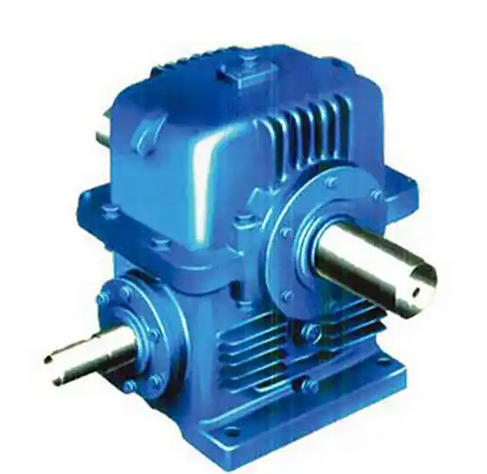Model parameter analysis and core performance of TPU200-40-2 worm gear reducer
1、 Model parameter analysis
The numerical part of this model corresponds to the key specifications of the gearbox, which is the basis for selection and application:
TPU: In most cases, it is a series logo customized by the manufacturer, usually representing the type of "worm gear reducer". Different brands may have slight differences in heat dissipation structure and housing material, but the core transmission form is the same.
200: Refers to the center distance between the worm gear and worm gear being 200mm, which is the core parameter determining the external dimensions and load-bearing capacity of the reducer. The larger the center distance, the higher the torque that can be transmitted.
40: Refers to a nominal transmission ratio of 40 (i.e. 40 turns of worm gear and 1 turn of worm gear), which belongs to the medium speed ratio range and is suitable for scenarios where high-speed input needs to be converted into medium low speed output (such as conveying equipment and mixing machinery).

2: Generally represents the installation method or output shaft structure, with common meanings including "dual axis output", "horizontal installation", or "specific flange specifications"
2、 Performance characteristics of TPU200-40-2 based on model parameters
1. Medium bearing capacity: For specifications with a center distance of 200mm, the rated torque that can usually be transmitted is between 1000-3000N · m (depending on the material, such as cast iron box or bronze worm gear), suitable for medium and small load transmission.
2. Good transmission stability: Worm gear transmission itself has the characteristics of a large number of meshing teeth and low impact. Coupled with a medium speed ratio (40), it has low noise during operation and is suitable for scenarios that require high stability.
3. Self locking: When the lead angle of the worm is less than the friction angle, reverse self-locking can be achieved (i.e. the worm wheel cannot drive the worm to rotate), which is suitable for equipment that needs to prevent load reversal (such as elevators and lifting platforms).

